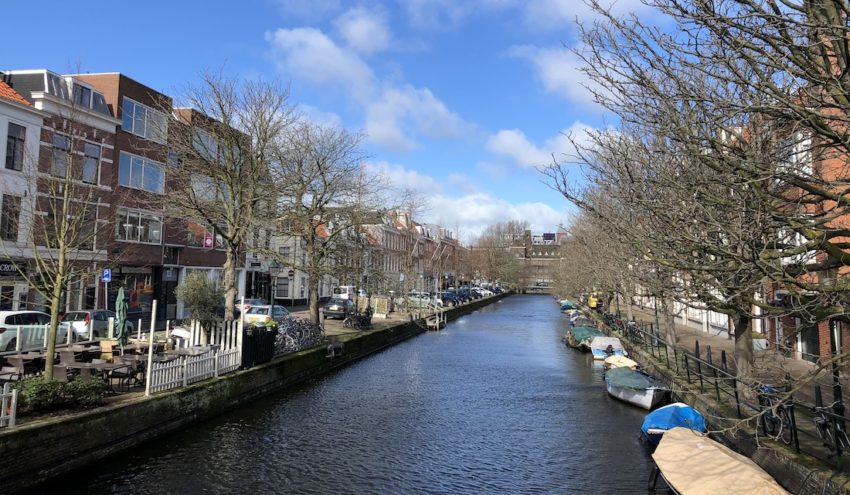Amsterdam has become all that’s wrong with tourism. It overflows with people, marauding stag and hen parties, drunks, druggies and sex tourists.
The seat of government in The Netherlands, The Hague, couldn’t be more different. It’s nowhere near as busy, is elegant and cultured and an absolute pleasure to explore. We were there for little more than 48 hours but concluded that we’d be happy to call it home, thank you very much. It may not have the broad collection of museums, historic houses and other attractions of big-hitting tourist cities, but sometimes that’s a good thing. It means one has the time to explore.
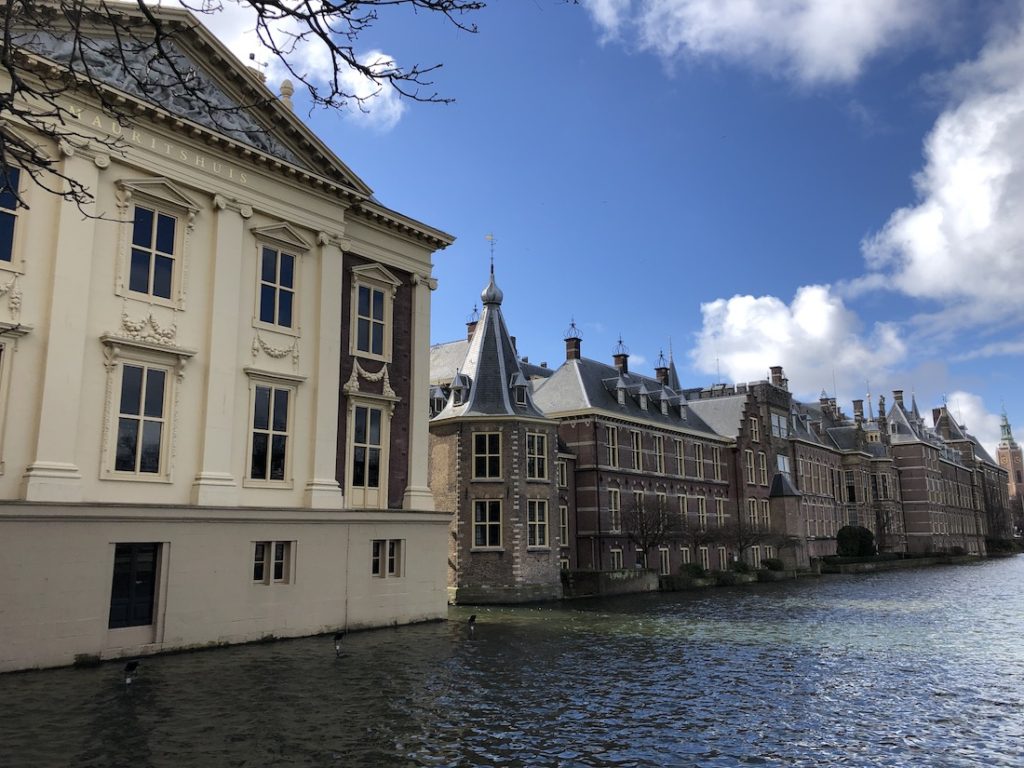
Living in London, we found The Hague an easy place to visit. The jump over the North Sea from London City Airport took less than 40 minutes on a blustery, turbulent afternoon. Our Stobart Air 190 (standing in for BA) bounced and rolled its way into Rotterdam Airport, accompanied by a downpour, but the rain gradually cleared as we made our way into The Hague on a combination of bus and metro. Our hotel, the Novotel, was ideally located just over the road from the historic government settlement of Binnenhof, but also linked to the venerable covered shopping arcade known as The Passage, built in the 19th century and today home to a range of interesting shops.
Having dumped our bags we went out in search of food and drink, navigating the narrow streets of the city centre that all seem to converge on the massive Great Church of St James. Despite all the modern skyscrapers and blocks that have sprung up in recent times, its tower still manages to dominate the cityscape. In the grim, stormy weather we stopped at an old-fashioned but lively gay bar called Cafe de Vink, enjoyed excellent fine dining at the pricey 6&24 restaurant (pigeon for me) and ended up in one of the the busy, noisy bars on the Grote Markt, once the site of The Hague’s busy main market but now the epicentre of the city’s nightlife scene. The atmosphere was friendly, the beer good.
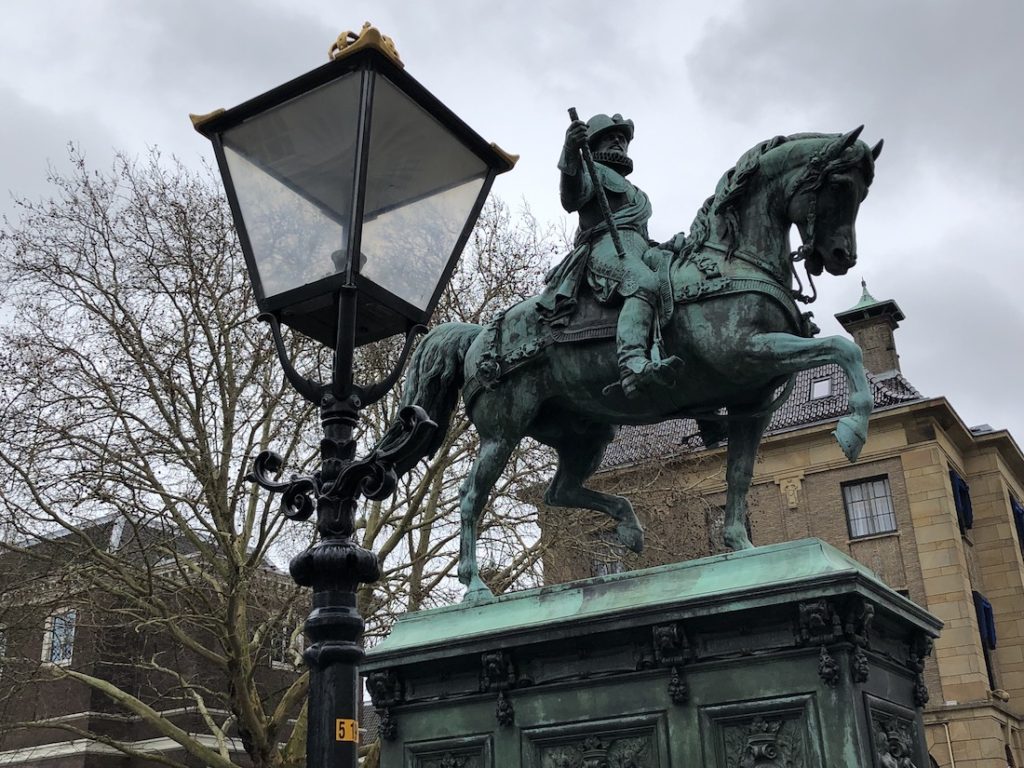
The next morning we went out in search of some of the city’s historic sites, accompanied by gales. The Binnenhof is at the centre of things, the seat of Parliament, the Prime Minister’s office and other government functions, all on the site of what was the home of the Counts of Holland from the 13th century. Built in the red brick that is so common in The Netherlands, it’s mercifully free of traffic, a combination of palaces and courtyards dominated by the church-like Ridderzaal, a grand hall that’s used for the state opening of Parliament. Not that it’s open to the public, at least unless you’ve booked a tour. Indeed, many of The Hague’s principal palaces and mansions remain frustratingly locked to prying eyes.
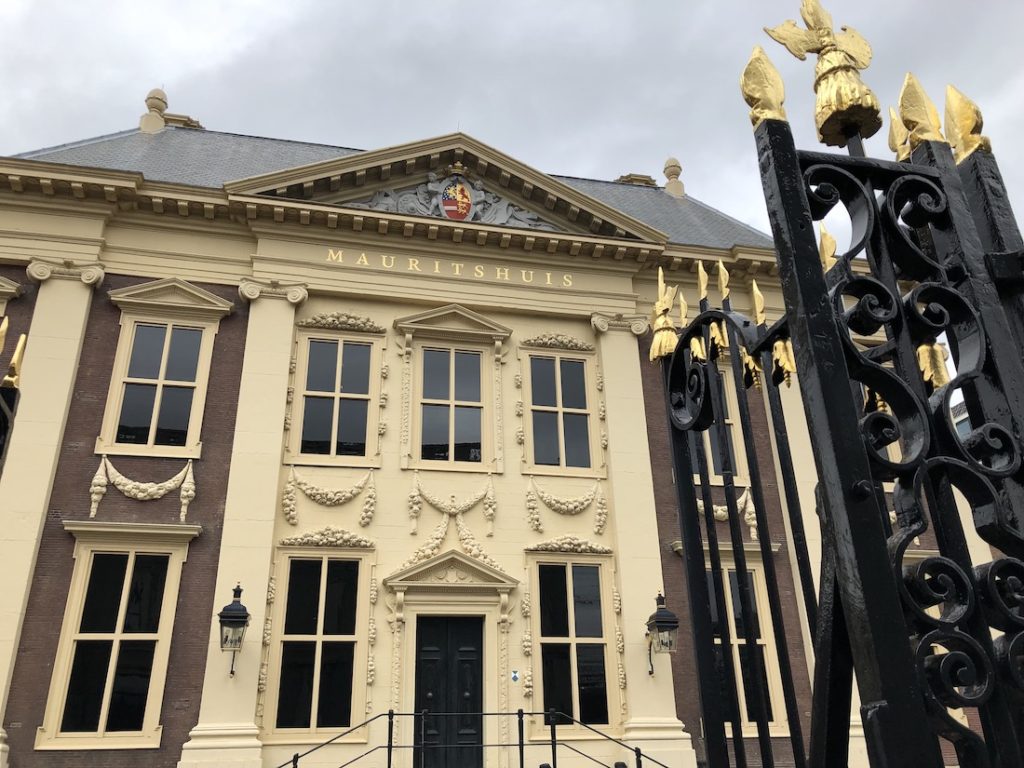
The Binnenhof stands on the edge of the Hofjiver, a man-made lake, and opposite the Lange Vijverberg – a grand avenue of stately mansions that was sporting a river of colourful daffodils during our visit. Also on the Hofjiver is the Mauritshuis, another handsome palace but one that houses the royal art collection, some famous Rembrandts and the work by Vermeer called The Girl With The Pearl Earring. The latter had attracted a large crowd of mutterers but it left me rather cold as, by and large, much art of the period always does. The Rembrandts were the undoubted highlight, including a magnificent self portrait, and the palace itself has just about enough of its historic fabric intact to make it a worthwhile visit. Fortunately (and exposing myself as a philistine in saying so) there weren’t too many pictures to see so we were in and out in an hour.
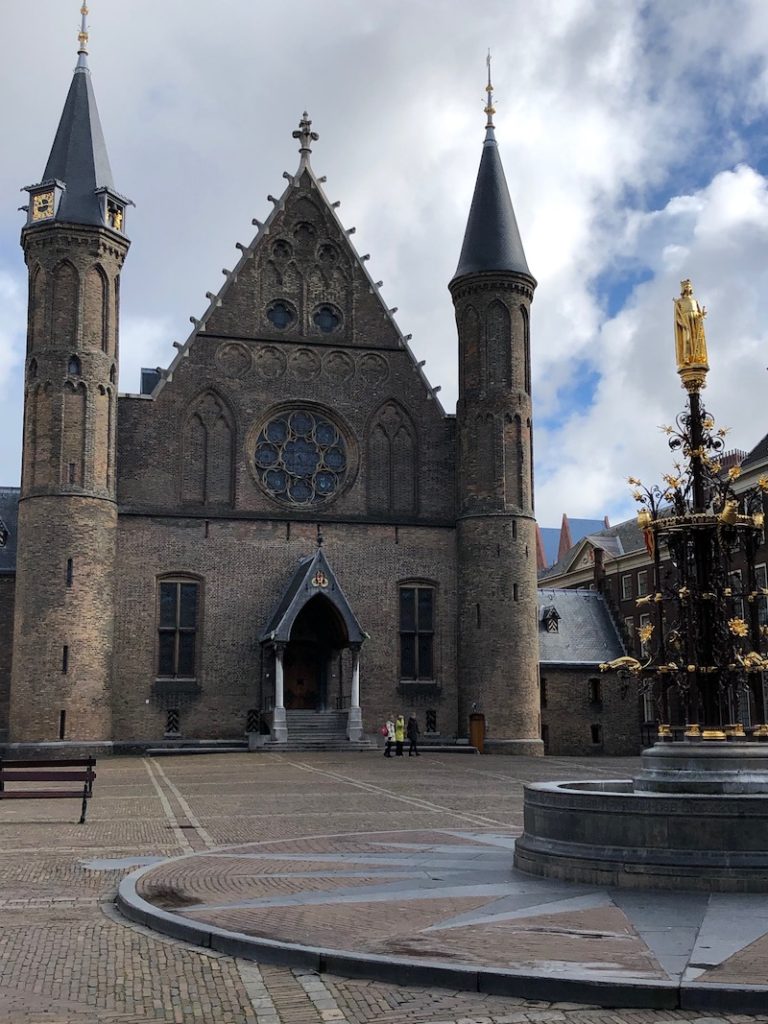
We walked back through the old city, down its narrow lanes paved attractively in a herringbone pattern, admiring the architecture that represents centuries of different styles. Prinsestraat is a typically attractive street of stylish boutiques, cafes and restaurants, largely free of the big chains, the litter and graffiti one finds in so many towns and cities. It leads to the Royal Stables (not open to the public) and the Palace Gardens (open but drab and full of puddles on a damp March morning). Beyond, in the maze of the streets, we passed the Noordeinde Palace (closed to the public) and one of The Hague’s many statues of long-dead kings.
Our walk took us on to the magnificent avenues and open spaces of the Lange Voorhout, lined by embassies and dignified mansions. The modest Lange Voorhout Palace hosts an exhibition on MC Escher, the graphic artist who’s particularly famous for his works inspired by maths, infinity, geometry and unusual perspectives. I knew next to nothing about him before paying the admission fee but very quickly found myself fascinated by his woodcuts and lithographs, especially the earlier works that focused more on landscapes, nature and buildings. The top floor is given over to interactive exhibits that bring his work alive for a modern audience, and very good it is too. Less successful is the attempt to tell the story of the palace as a home to the royal family in times past. Other than a few bits of furniture and some photos, there’s not much to see and it feels like a wasted opportunity. Still, the Escher exhibition was worth the price of admission alone and the staircase is magnificent!
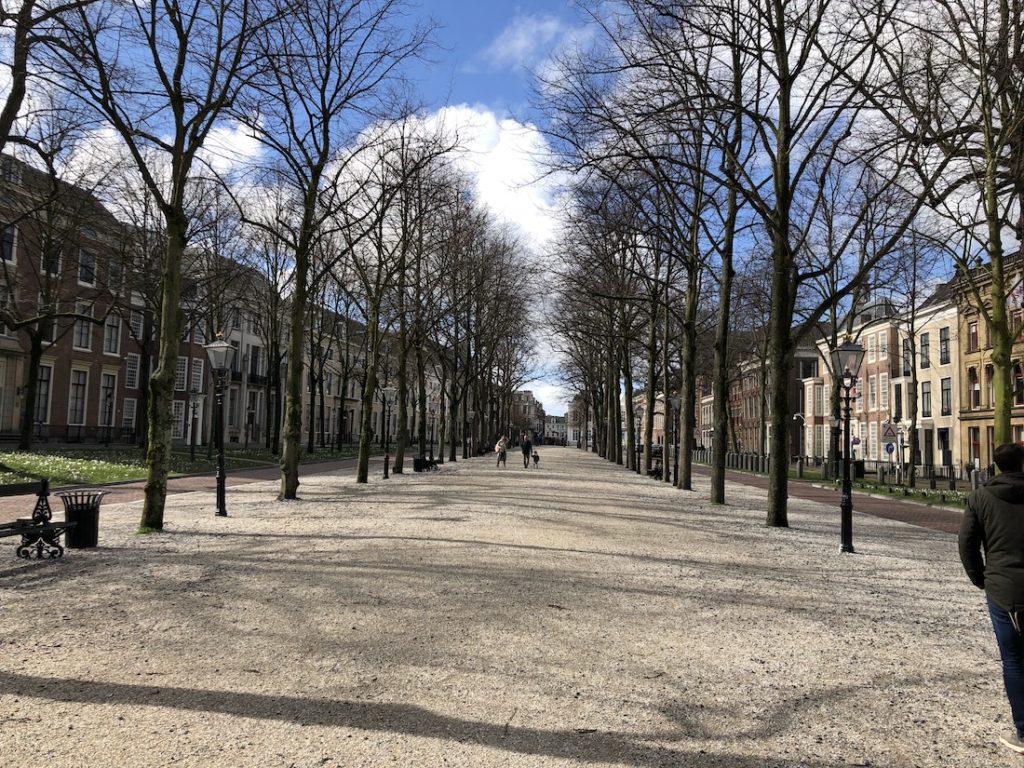
After a long day on our feet, we needed fuel and we found it in buckets in a popular Greek restaurant called Knossos. The staff were being run ragged on such a busy night but they retained their good humour as they bought us plates piled high with colon-straining red meat. Later we found ourselves in an old-fashioned, friendly pub in the streets nearby, drinking quality beer.
The next morning, a Sunday, dawned brighter and far less windy, so we went for a wander and then stopped for an hour at the History Museum, which looks out over the Hofjiver. On the whole it’s worth a visit but tends to lose its way when it goes into very specific events in Dutch history that aren’t of much interest to the foreigner. There’s a good animation on the birth of the city and its growth over the centuries, accompanied by some good art, an all-too-brief section on the Nazi occupation during the Second World War and an interesting focus on the post-war development of The Hague. There’s a room featuring old dolls houses, which feels like a random add-on.
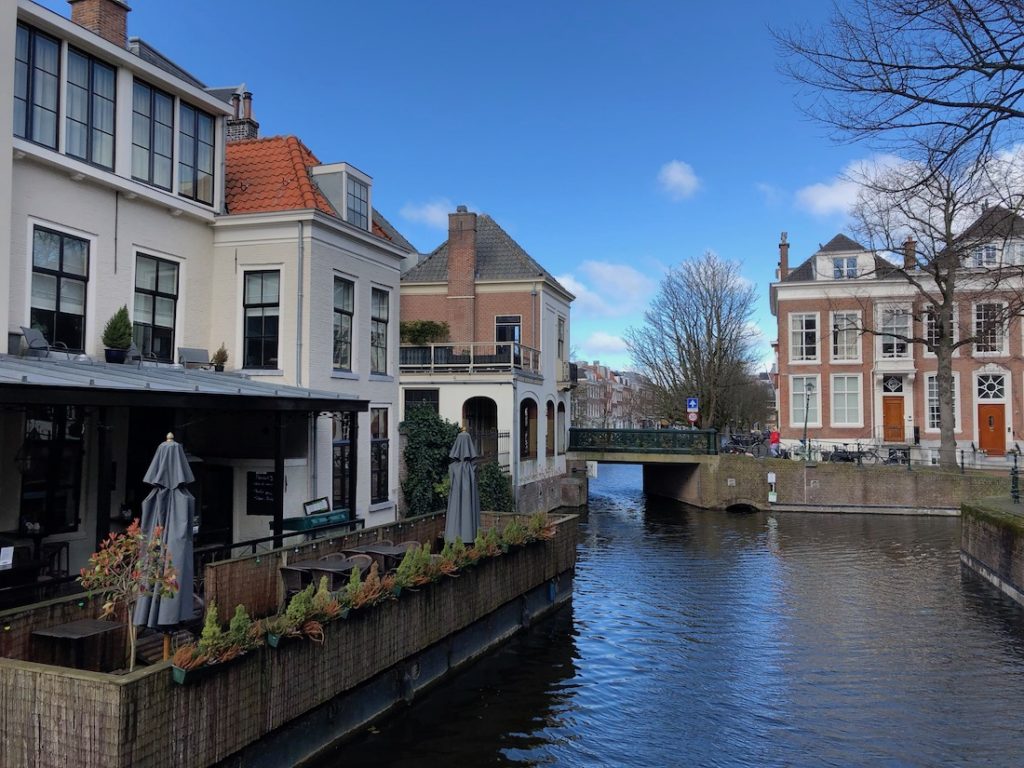
We spent our last few hours exploring yet more of the city’s charming canal-side neighbourhoods, in particular those between Lange Voorhout and the Mauritskade. Full of expensive, historic properties and charming boutiques, quaint bridges and twee pubs, the picturesque streets are quiet and elegant and I couldn’t think of a more perfect place to live in the city. At times it felt as if we were in a remote village rather than a throbbing metropolis.
There was rather more life in the simply named if expansive Plein, a broad public square with an imposing statue of William the Silent in its centre and numerous bars and restaurants on its edges. We stopped for refreshments before picking up our bags and heading back the way we came, to London City via Rotterdam, the sun shining, the air chilly.
We’d both fallen for The Hague’s charms and we’d both happily return, perhaps in warmer times to explore its coastal suburbs. The city may not have as many attractions as Amsterdam, Brussels and its other near neighbours, but it has a friendly vibe and feels manageable. Its people clearly have a respect for their city and their fellow citizens that’s so lacking in many parts of London. I just hope the tourists don’t end up flocking to this fine Dutch city in their zillions and ruining it for us…

